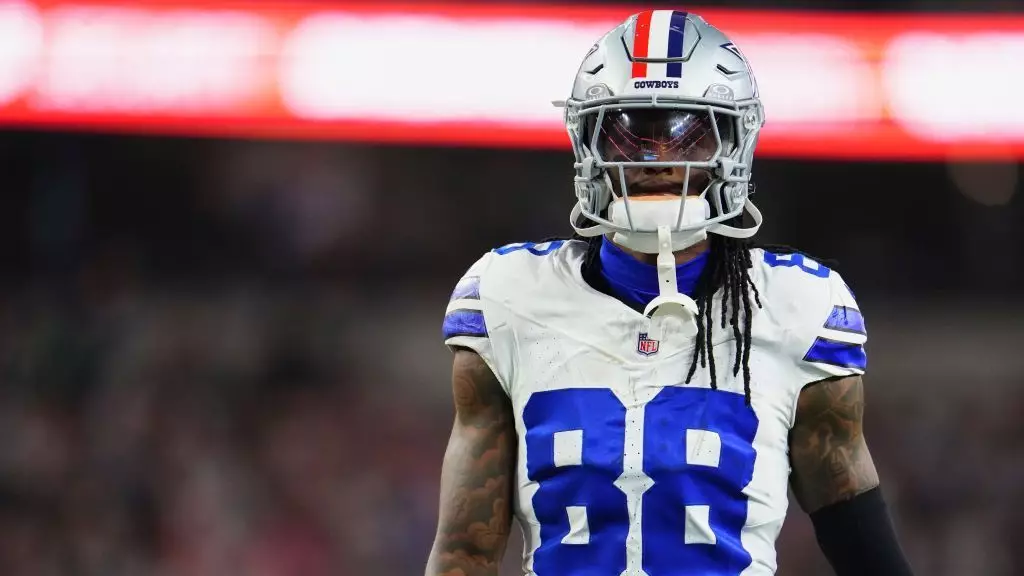The Dallas Cowboys are no strangers to pressure, both on and off the field. Nestled in Arlington, Texas, AT&T Stadium, while iconic, presents its own set of challenges that can affect performance during games. A notable aspect of this issue emerged during a recent game against the Philadelphia Eagles, where the relentless glare of the sun dominated the conversation. The Cowboys suffered a decisive 34-6 defeat, and an apparent missed opportunity in the second quarter didn’t help either. It is worth examining how such seemingly trivial factors can lead to substantial ramifications in high-stakes environments like the NFL.
During the game, the Cowboys faced a critical moment with a second-and-goal at the Eagles’ 3-yard line. Quarterback Cooper Rush spotted wide receiver CeeDee Lamb in the end zone, potentially setting up a touchdown that could have shifted the momentum. However, Lamb, blinded by the shining sun, was unable to catch the pass. Instead, the team settled for a field goal, and the offense went silent for the remainder of the game. This situation encapsulates how environmental factors can play a pivotal role in a team’s success or failure, overshadowing even the most prepared strategies and confident plays.
Immediately following the game, Cowboys owner Jerry Jones addressed the media with palpable frustration. Not only were the Cowboys defeated, but the issue of sunlight also became a focal point in his questioning. Jones remarked pointedly about the predictability of the sun’s positioning, implying that the organization should be better prepared for such fundamental challenges. His sharp retorts raised questions about whether sufficient measures are being taken to mitigate this recurring problem. While it’s clear that the Cowboys have utilized curtains for various events in the stadium, the hesitance to implement such a solution during games poses a significant leadership dilemma.
The inquiry into why curtains aren’t more commonly used during games reflects a tension between tradition and modernity. The Cowboys’ reluctance to adapt their strategies to accommodate the sunlight underscores a deeper issue within the organization. Notably, the team practices off-site, and the unique position of the stadium is only partially considered. Jones’ dismissive attitude towards the suggestion to hang curtains illuminates a broader theme: the Cowboys seem to marry old-school values with new-age challenges, often to their detriment.
Lamb’s comments further illustrate the players’ own desires for pragmatic solutions. His openness to the idea of curtains resonates with fellow players who might feel similarly impaired during crucial game moments. Despite Jones’ assertions that all teams are liable to face the same conditions, it’s evident that the Cowboys desire a proactive approach rather than reactive complaints after losses.
The Cowboys’ challenges at AT&T Stadium extend beyond the physical limitations of the venue; they stimulate conversations about accountability and adaptability within the franchise. The organization’s history and its reliance on a “tradition” that seems unbending is increasingly at odds with the expectations of both players and fans. For an organization that has boasted success in the past, this latest setback exposes a vulnerability that could haunt them moving forward.
As Dallas continues to grapple with these issues, the question lingers—how can a multimillion-dollar enterprise contend with such basic operational oversights? The sun may have played a crucial role in that disastrous game, but the shadows of uncertainty linger, making one wonder whether the problem is as simple as what sits over the field or a deeper systemic failure yet to be addressed.
To secure success in future endeavors and regain competitive footing, the Dallas Cowboys must acknowledge the necessity of change. Implementing practical solutions like curtains, adjusting practice routines, or re-evaluating play-calling strategies could mitigate the impact of external factors during critical game moments. Ultimately, embracing adaptation could help the Cowboys not only reclaim their competitive edge but also prevent unnecessary distractions from overshadowing their potential on the field. After all, to recognize one’s shadow is to prepare for the light—something the Cowboys are undoubtedly learning, albeit the hard way.


Leave a Reply